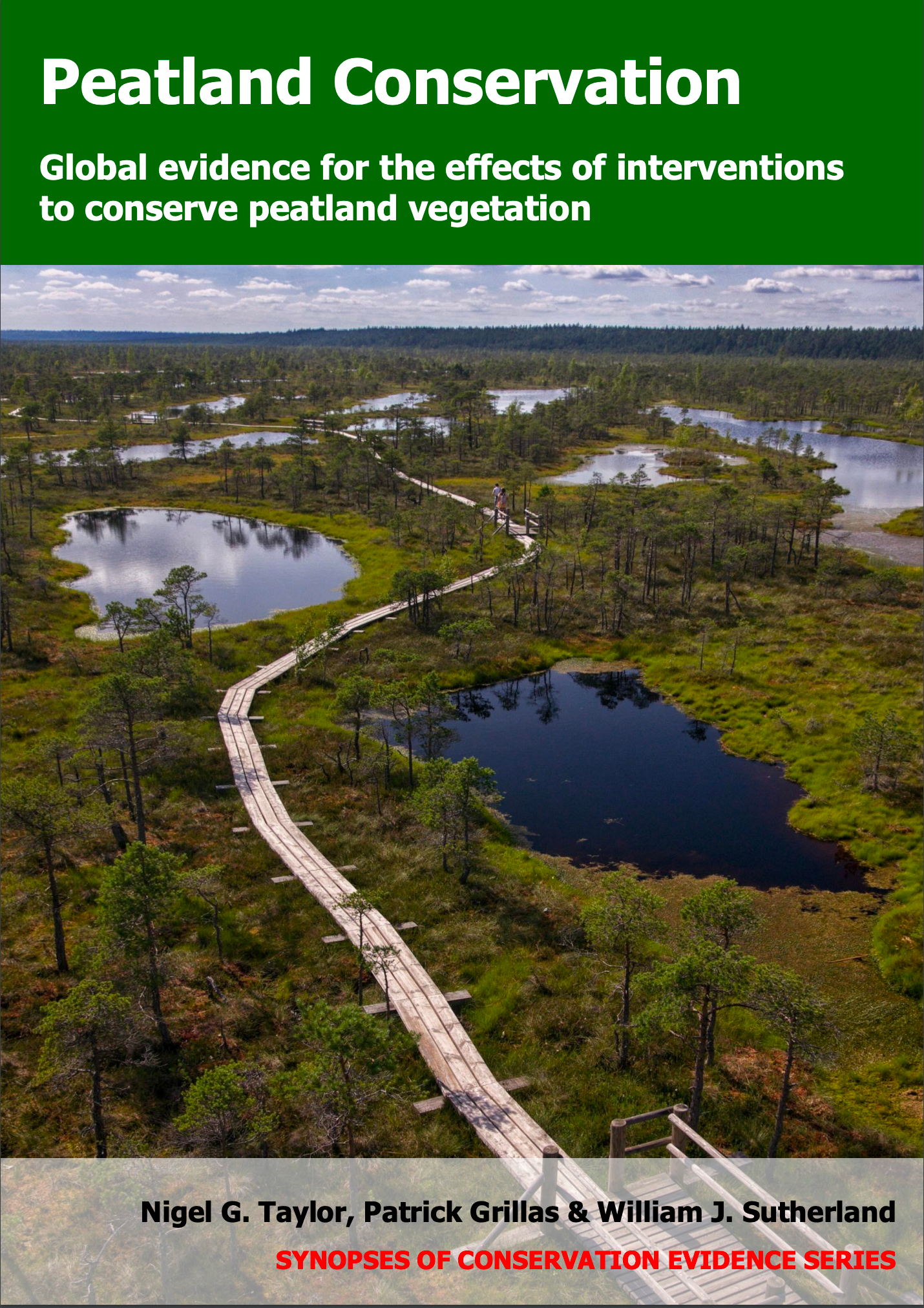Add inorganic fertilizer (without planting)
-
Overall effectiveness category Unknown effectiveness (limited evidence)
-
Number of studies: 3
View assessment score
Hide assessment score
How is the evidence assessed?
-
Effectiveness
50% -
Certainty
30% -
Harms
15%
Study locations
Supporting evidence from individual studies
A replicated, paired, controlled study in 1994 in a degraded fen meadow in the Netherlands (van Duren et al. 1998) found that adding fertilizer increased plant biomass in 10 of 24 comparisons. The other comparisons were non-significant increases. After three months, above-ground vegetation biomass was greater in plots fertilized with phosphorous (80–370 g/m2) than in unfertilized plots (20–200 g/m2). The same was true for plots fertilized with phosphorous and nitrogen (220–460 g/m2) vs plots fertilized only with nitrogen (30–270 g/m2), and for plots fertilized with potassium, phosphorous and nitrogen (240–490 g/m2) vs plots fertilized with potassium and phosphorous or nitrogen (30–300 g/m2). In May 1994, 1 m2 plots (number not reported) were established in a rewetted fen meadow. Each plot received one fertilizer treatment: no fertilizer, N, P, K, N+P, N+K, P+K or N+P+K. Half of the plots were in an area stripped of topsoil. In August 1994, above-ground vegetation was harvested in a 60 x 60 cm quadrat in each plot, then dried and weighed.
Study and other actions testedA replicated, controlled, before-and-after study in 1995 in a historically mined raised bog in Germany (Sliva et al. 1999) found that fertilizer increased seedling growth in 15 of 48 comparisons, all involving phosphorous, but had no effect in the other 33 comparisons. After four months, seedlings in plots fertilized with phosphorous (either alone or in combination with nitrogen and potassium) were significantly taller than seedlings in unfertilized plots in 15 of 24 comparisons (for which fertilized: 2–18 cm; unfertilized: 1–4 cm). Seedlings in plots fertilized only with nitrogen or potassium were never significantly taller than unfertilized seedlings (0 of 24 comparisons; fertilized: 1–5 cm; unfertilized: 2–4 cm). In spring 1995, six 16 m2 plots of recently rewetted bare peat received each fertilizer treatment: N, P, K, or a mix of all three. Eight additional plots were not fertilized. After four months, all seedlings of six plant species (four herbs and two shrubs) were measured in every plot.
Study and other actions testedA replicated, randomized, paired, controlled, before-and-after study in 1998–2000 in a historically mined raised bog in New Zealand (Schipper et al. 2002) reported that fertilized plots typically contained more plant species and had greater vegetation cover than unfertilized plots. These results are not based on tests of statistical significance. After two years, fertilized plots contained more plant species than unfertilized plots in 11 of 12 comparisons (fertilized: 3–8 species; unfertilized: 2–6 species). Fertilized plots had greater cover of two peatland-characteristic plants: manuka Leptospermum scoparium in 6 of 9 comparisons (for which fertilized: 1–92%; unfertilized: 0–87%) and bamboo rush Sporadanthus ferrugineus in 5 of 9 comparisons (for which fertilized: 2–27%; unfertilized: 1–8%). Total vegetation cover was also higher in fertilized plots in 6 of 9 comparisons. In March 1998, twenty-four plots (each 25 m2) were established, in six blocks, on bare rewetted peat. Six plots (one random plot/block) received each fertilizer treatment: N, P, N+P, or none. None of these plots were sown. In June 2000, canopy cover was estimated for every plant species in each plot.
Study and other actions tested
Where has this evidence come from?
List of journals searched by synopsis
All the journals searched for all synopses
This Action forms part of the Action Synopsis:
Peatland Conservation
Peatland Conservation - Published 2018
Peatland Conservation





)_2023.JPG)














